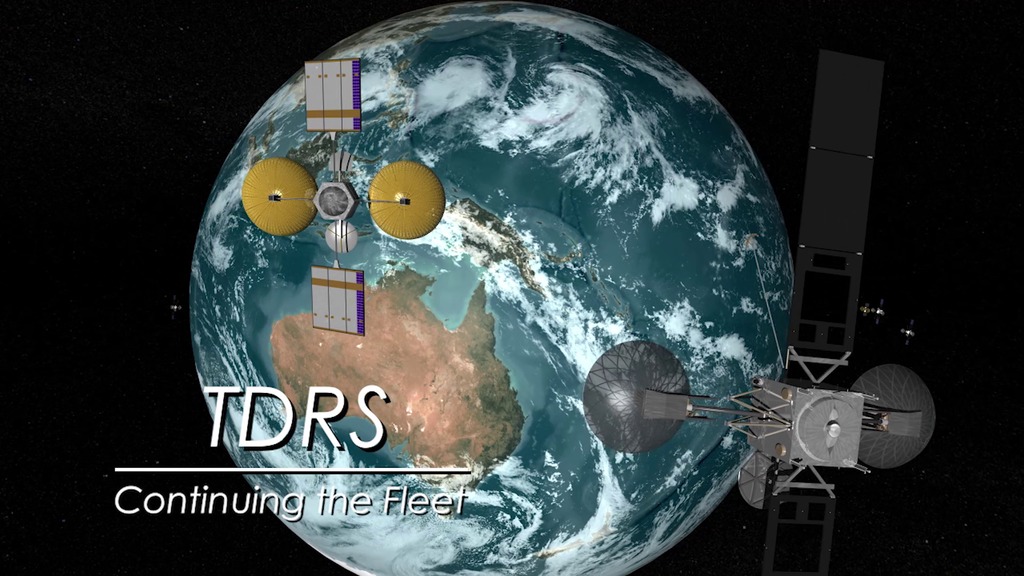Space Communications Live Interviews - Feb. 15, 2018
B-roll for suggested questions 1-5.
New Straight out of Sci-Fi Laser Technology Will Advance Space Communications
We’ve all been frustrated with spotty cell coverage. NASA faced a similar issue, in space. Fifty years ago, astronauts were only able to communicate with Earth about 15 percent of the time. Thanks to NASA’s advances in space communications, every word and heartbeat from astronauts circling 250 miles above Earth aboard the International Space Station comes down to Mission Control in near real-time. NASA’s Tracking and Data Relay Satellites (TDRS) bring in data from over 40 missions including the space station.
Have you ever wondered how NASA communicates with astronauts and streams live video from space? Or how striking images of the cosmos get back to Earth? Join NASA space communications experts from 6:00-11:30 a.m. ET on Thursday, Feb. 15, to learn about this amazing technology and get a preview of how NASA is using lasers to take space communications and navigation to the next level for future exploration missions.
The space communications network that allows NASA astronauts and low-Earth orbiting satellites to communicate with the ground is entering a new age of exploration and technology. The latest TDRS launched on Aug. 18, 2017. This week, TDRS-13 officially joined NASA’s Space Network. With its addition, the TDRS fleet has more satellites than ever before, working together to enable science discoveries and exploration. Future communications satellites will use lasers to relay even more data at once.
Clare Skelly / clare.a.skelly@nasa.gov / 301-286-4994
HD Satellite Coordinates for G17-K18/Upper: Galaxy 17 Ku-band Xp 18 Slot Upper| 91.0 ° W Longitude | DL 12069.0 MHz | Vertical Polarity | QPSK/DVB-S | FEC 3/4 | SR 13.235 Mbps | DR 18.2954 MHz | HD 720p | Format MPEG2 | Chroma Level 4:2:0 | Audio Embedded
Suggested Questions:
1. How has communicating with astronauts changed since the Apollo missions?
2. NASA’s space communications network has more satellites than ever before working to bring back data from space. What does the newest satellite add to the network?
3. How will NASA eventually use ‘space lasers’ to advance this technology?
4. NASA spacecraft capture stunning imagery of everything from our home planet to the cosmos. What kinds of missions does TDRS support?
5. Where can we learn more?
Extra Questions for Longer Interviews:
1. How will NASA take future generations of space communications satellites to the next level?
2. What is NASA doing to develop and perfect laser communications technology?
3. NASA has three communications networks – the Near Earth Network, Space Network and Deep Space Network. How are they different?
4. How would you describe the TDRS legacy?
Location: NASA's Goddard Space Flight Center/Greenbelt, Maryland
Interview Talent:
David Littmann/TDRS Project Manager
Cheryl Gramling/Navigation Systems Engineer
Greg Heckler/Telecommunications Systems Manager
Sandra Cauffman/Deputy Director of the Earth Science Division at NASA Headquarters [Spanish speaker]
Video: NASA will roll all insert videos during live interviews. If needed, stations can roll a clean feed of all video at 5:45 a.m. ET on Feb. 15, at the above listed satellite. Canned interviews and b-roll will be available on this page starting at 6 p.m. on Feb. 14.
For more visit: https://esc.gsfc.nasa.gov/ and @NASA_TDRS
Extra related b-roll.
Taped interview with Greg Heckler / Telecommunications Systems Manager
Taped interview in Spanish with Sandra Cauffman / Deputy Director of the Earth Science Division at NASA Headquarters
Taped interview with David Littmann / Tracking and Data Relay Satellite (TDRS) Project Manager
For More Information
Credits
Please give credit for this item to:
NASA's Goddard Space Flight Center
-
Producer
- Clare Skelly (NASA/GSFC)
-
Editor
- Rich Melnick (KBR Wyle Services, LLC)
Release date
This page was originally published on Wednesday, February 7, 2018.
This page was last updated on Wednesday, May 3, 2023 at 1:46 PM EDT.
